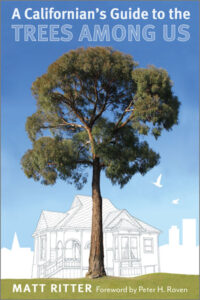 Down the road from our home is a grove of Douglas Fir (Pseudotsuga menziesii) trees. Native to the area, “Doug Firs” are easily found in most any field guide to trees that encompasses a geographic range in which northwest Oregon is included. However at the edge of this little grove is another tree – deciduous and smaller – that long perplexed me. Nothing in guide after guide to which I turned for guidance seemed to have anything quite like it depicted. Fortunately, I finally discovered that it was of the Locust (Robinia) genus – not one native to Oregon and one “not fully described” even in the Oregon State University Department of Forestry Common Trees of the Pacific Northwest website.
Down the road from our home is a grove of Douglas Fir (Pseudotsuga menziesii) trees. Native to the area, “Doug Firs” are easily found in most any field guide to trees that encompasses a geographic range in which northwest Oregon is included. However at the edge of this little grove is another tree – deciduous and smaller – that long perplexed me. Nothing in guide after guide to which I turned for guidance seemed to have anything quite like it depicted. Fortunately, I finally discovered that it was of the Locust (Robinia) genus – not one native to Oregon and one “not fully described” even in the Oregon State University Department of Forestry Common Trees of the Pacific Northwest website.
That’s the challenge with many tree guides – most are focused on species that are native and often fail to include others that are perhaps widely known to have been planted in the area. Consequently, one often finds oneself staring in puzzlement at a tree that may bee seen in various local spots due to a horticultural or agricultural trend from a few decades ago but which has since been forgotten and hence the species itself is consequently left out of more recently written guides – unless, of course, the author happens to be personally familiar with its presence there.
Which is why I was so impressed by a field guide I recently came across from Heyday Books: Dr. Matt Ritter‘s A Californian’s Guide to the Trees Among Us. Rather than focus on native trees, Prof. Ritter selected just over one hundred fifty of “California’s most commonly grown trees […w]hether native or cultivated.” Consequently, in addition to native species like Coast Redwood (Sequoia sempervirens) and Monterey Pine (Pinus radiata), readers can find depictions and descriptions of Eucalypts from Australia and Palms from Asia, South America, and Oceania, and many other commonly cultivated species the nativity of which may well be on the opposite side of the planet. Indeed, reading through it, one quickly comes to understand that many of the most commonly seen trees in California today are not native to the state at all, and some that are native would only been seen rarely were they not popular among California landscapers.
It is hoped that more future field guides follow the technique Dr. Ritter has employed in this book, as it will improve the availability of information about the most commonly seen species and as a result make an understanding of them more readily accessible to a wider audience.
Available from:
If you enjoyed reading this, please consider signing up for The Well-read Naturalist's newsletter. You'll receive a helpful list of recently published reviews, short essays, and notes about books in your e-mail inbox once each fortnight.



